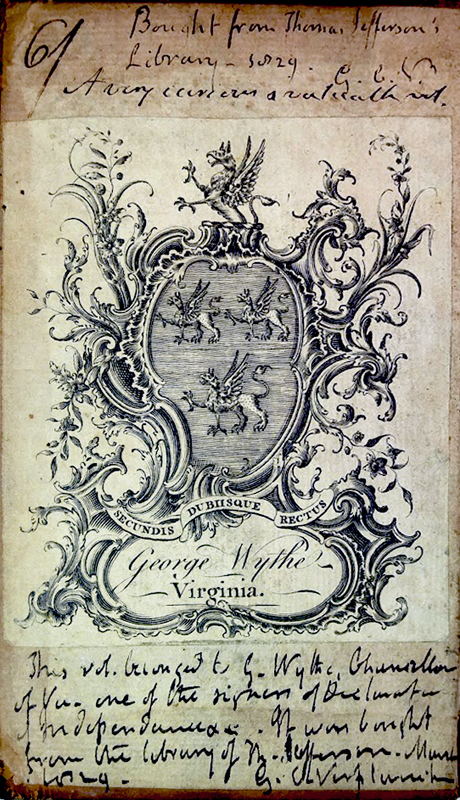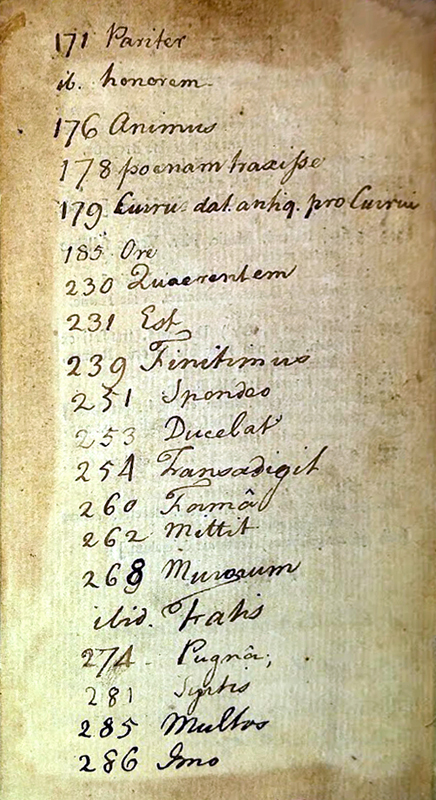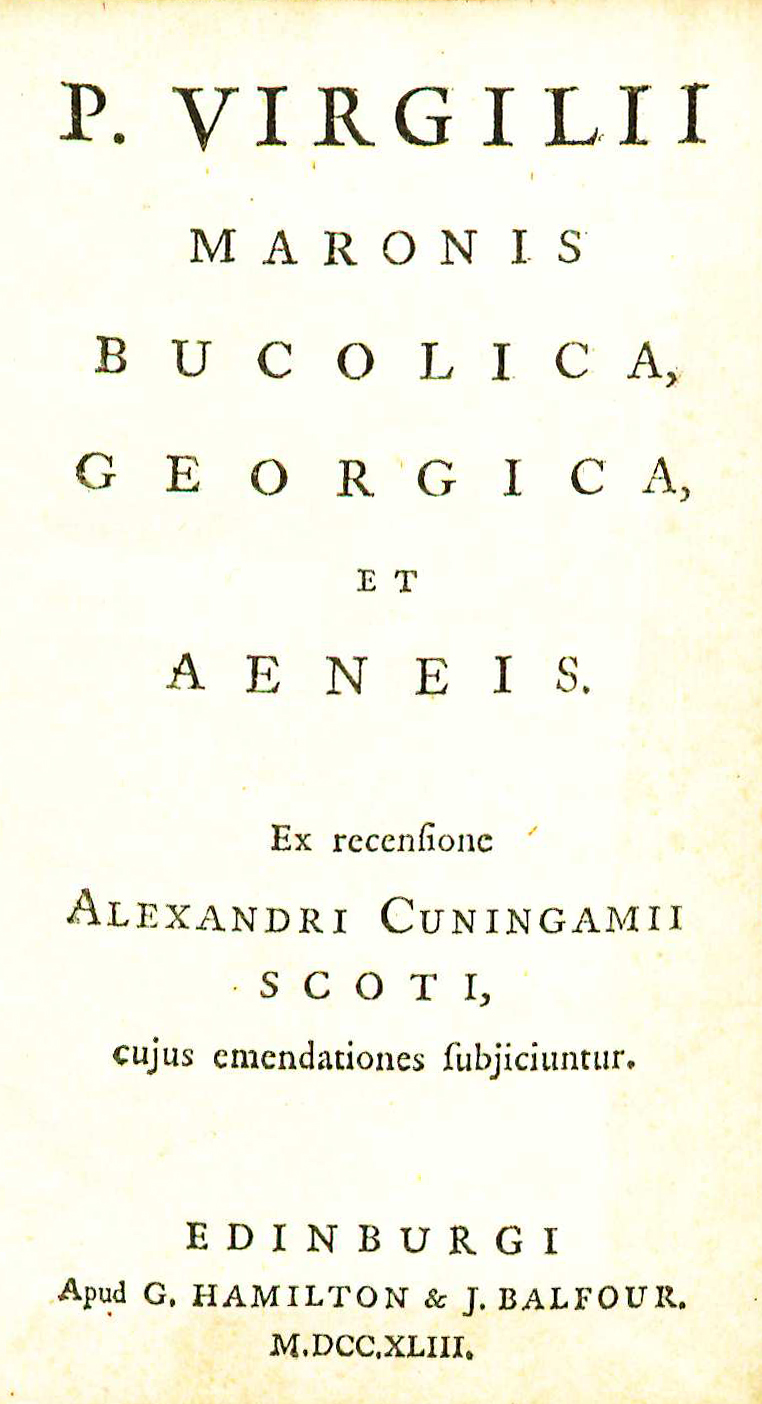P. Virgilii Maronis Bucolica, Georgica, et Aeneis
by Virgil
| P. Virgilii Maronis Bucolica, Georgica, et Aeneis | |
|
Title page from P. Virgilii Maronis Bucolica, Georgica, et Aeneis, George Wythe Collection, Wolf Law Library, College of William & Mary. | |
| Author | Virgil |
| Published | Edinburgi: Apud G. Hamilton & J. Balfour |
| Date | 1743 |
| Language | Latin |
| Pages | 7, 335, 19 |
| Desc. | 12mo (14 cm) |
| Location | Shelf L-2 |
Publius Vergilius Maro (70 – 19 BCE), commonly known as Virgil, was a Roman poet born in Cisalpine, Gaul, on the side of the Alps closest to Rome. His family was well-off, enabling his studies at Cremona and Milan, as well as Rome and Naples, the latter under the Epicurean philosopher Siro.[1] When land was confiscated following the battle of Phillippi in 42 BCE for the army veterans of Antony and Octavian, Virgil's family lost land. They were likely compensated, however, with property near Naples.[2] Virgil’s Eclogues, his first collection of poems, were likely written around that time, perhaps as late as 38 BCE, as the confiscations were a central topic of two of the poems.[3] At some later point, Virgil became part of the poetic circle around Maecenas, putting him in close contact with Octavian, the future emperor Augustus.
Virgil published his Georgics in 29 BCE. Throughout the 20s BCE, both of Virgil's books of poetry were widely read and distributed.[4] His poems illustrate the greatness of the Roman Empire through “the technical perfection of his verse” and imagery.[5]
This volume contains the three most important of Virgil’s works: the Pastorals ("Bucolics" or "Eclogues"), the Georgics, and the Aeneid. The Pastorals muse on the idyllic life of shepherds in northern Italy.[6] The Georgics are, similarly, meditations on the nature of agriculture. The name "Georgics" refers to the Greek phrase for "working the land" and the word for “farmer.”[7] Where Virgil's pastoral poems were largely imitative, the focus and depth of his Georgics were unprecedented.[8] The Aeneid is Virgil's great epic, following the tradition of Homer.[9] The work follows the story of Aeneis, who leaves behind his conquered homeland of Troy and goes on to found the culture that will eventually become Rome. Virgil himself captured the scope of these three works with the inscription on his tombstone, "cecini pascua rura duces" (I sang of farms, fields, and heroes).[10]

Evidence for Inclusion in Wythe's Library
Listed in the Jefferson inventory of Wythe's library as "Virgil. 12mo.", and kept by Thomas Jefferson. The book was later bought at the 1829 auction of Jefferson's library by Gulian C. Verplanck. Wythe's copy survives and is owned by the Mount Gulian Historic Site in New York, the Hudson Valley colonial homestead of the Verplanck family. The volume includes Wythe's bookplate, and a handwritten list by Wythe noting references to Homer's Iliad.

Description of the Wolf Law Library's copy
Bound in contemporary calf with raised bands on spine.
Images of the library's copy of this book are available on Flickr. View the record for this book in William & Mary's online catalog.
